Rhyming Robot Rhyming Words for Grade 1
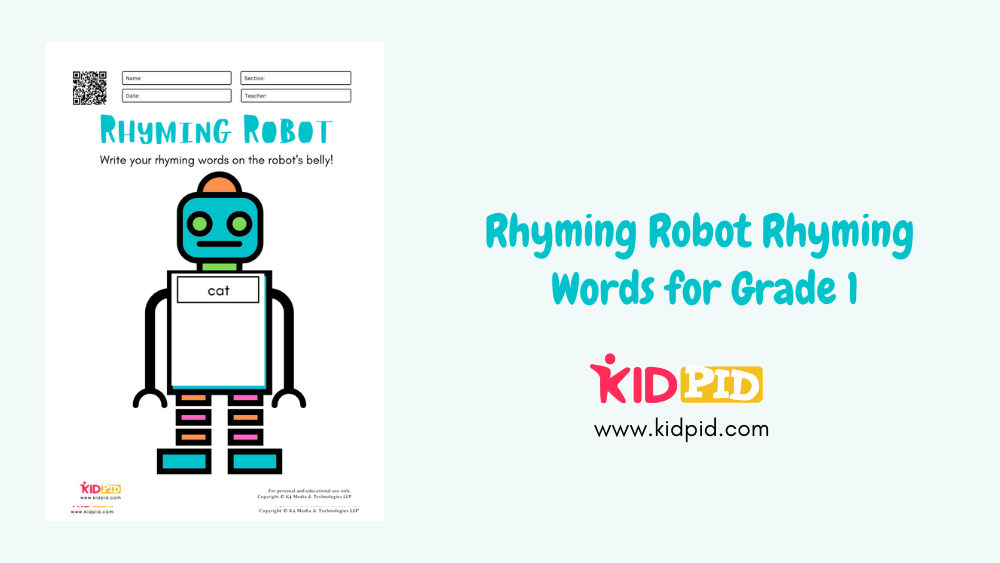
Words that sound similar are rhyming words. Rhyming words have different beginning sounds but have similar ending sounds. A rhyme is thus defined as a repetition of similar sounds in the final syllables of any word. Rhyming words are found commonly in children’s poems. These are used as embellishments to heighten the beauty of the sentences typically in verses or songs. Words such as ‘wall’ and ‘fall’ in the famous nursery rhyme ‘Humpty-Dumpty’ are rhyming words since the last syllables of both words have the same sounds.
To find two rhyming words makes for a great exercise for kids. It allows them to engage their mind to find two words that produce similar sounds. It is a very effective way to increase their vocabulary. The more words they know, the better they’ll be at finding words that rhyme with one another.
Robot Rhyming Practice Worksheets
In the following worksheets, the rhyming robot is in need of words that rhyme. Children have to write two or three words that rhyme with the words written in the box. For example; in the first sheet, children have to write three words that rhyme with ‘cat’.
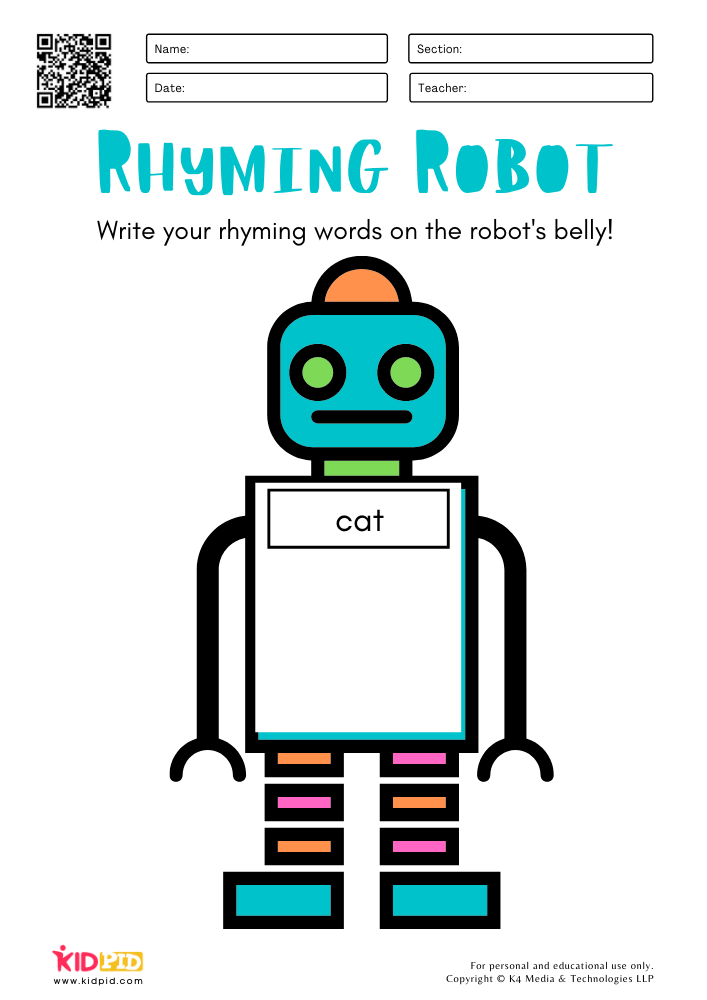
This worksheet consists of ten sheets hence there are ten different words that a child has to find rhyming words for. Introduce him well with the concept of similar-sounding words so that he garners a better understanding of what needs to be done. Download the worksheets, print them and hand them over to your child for a fun activity that is sure to sharpen his mind and phonemic skills.
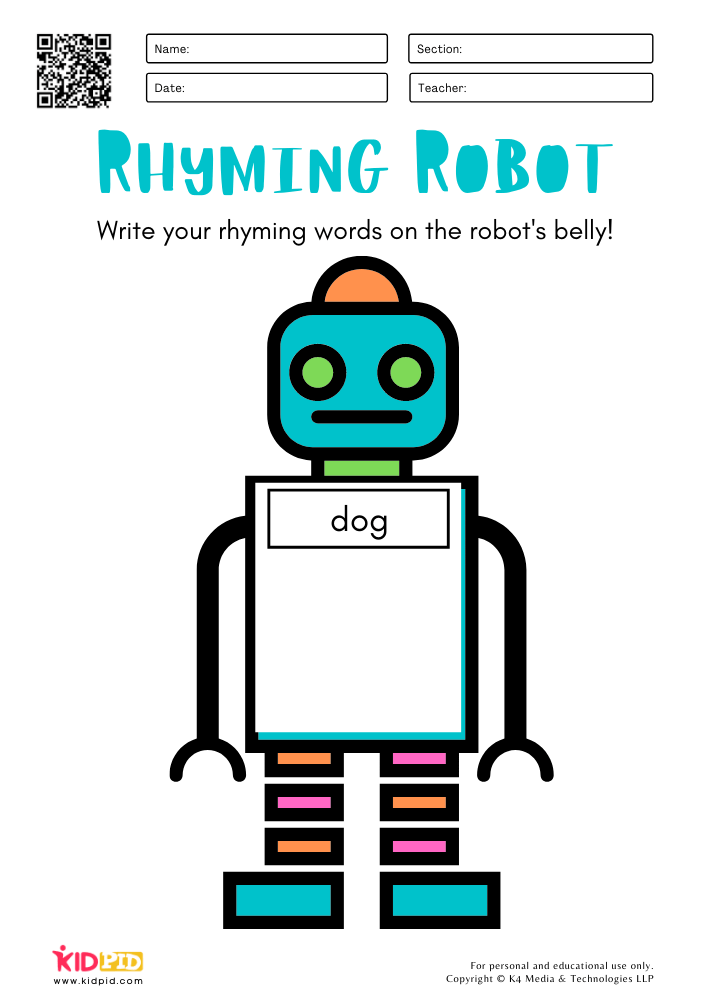
Here the child has to think of two words that rhyme with ‘ball’. You can make the activity more fun by using hints or riddles. Exercises such as this make for a good parent-child activity.
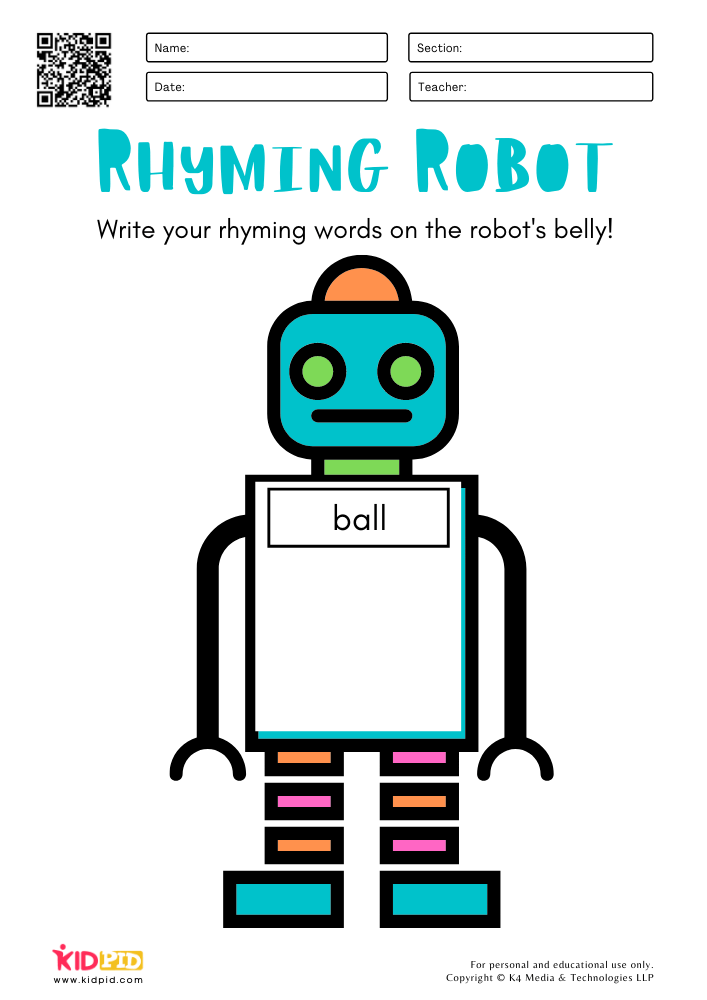
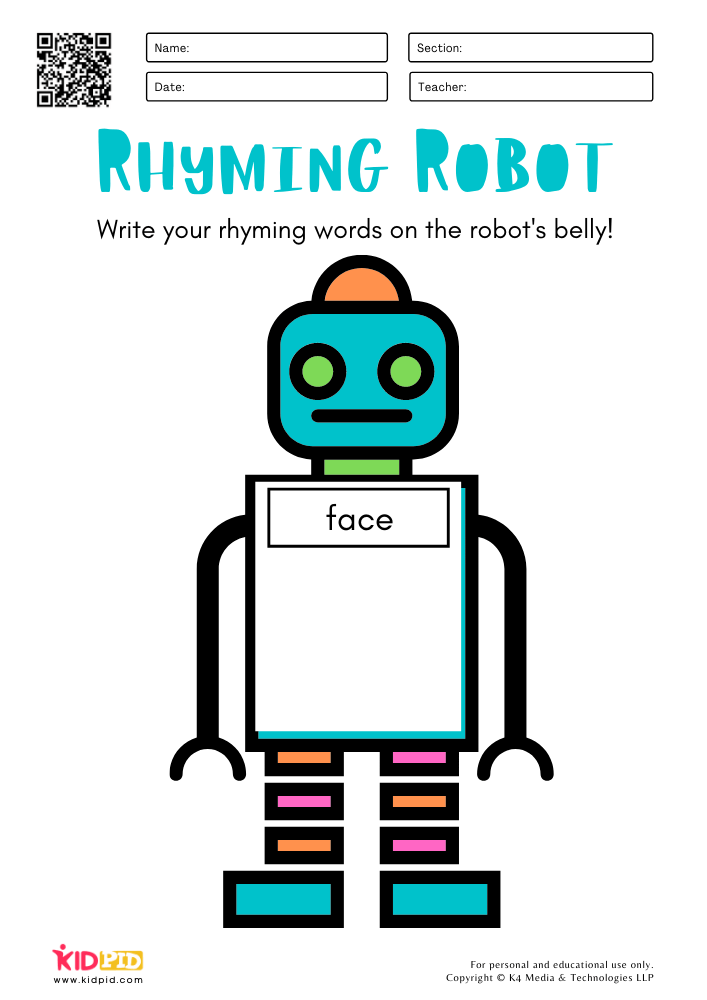
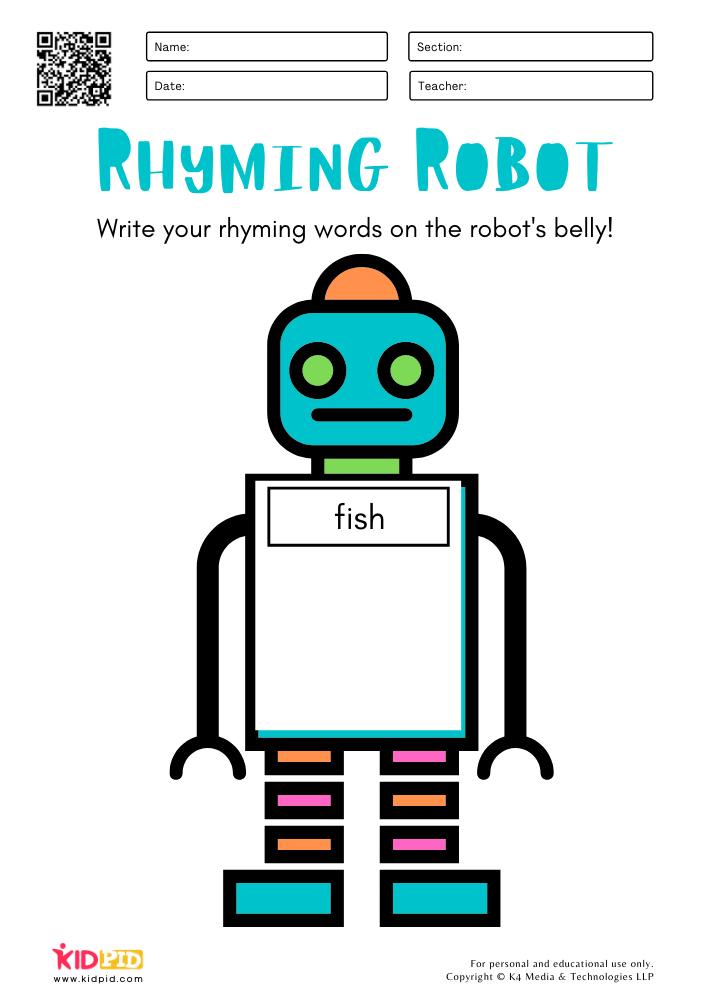
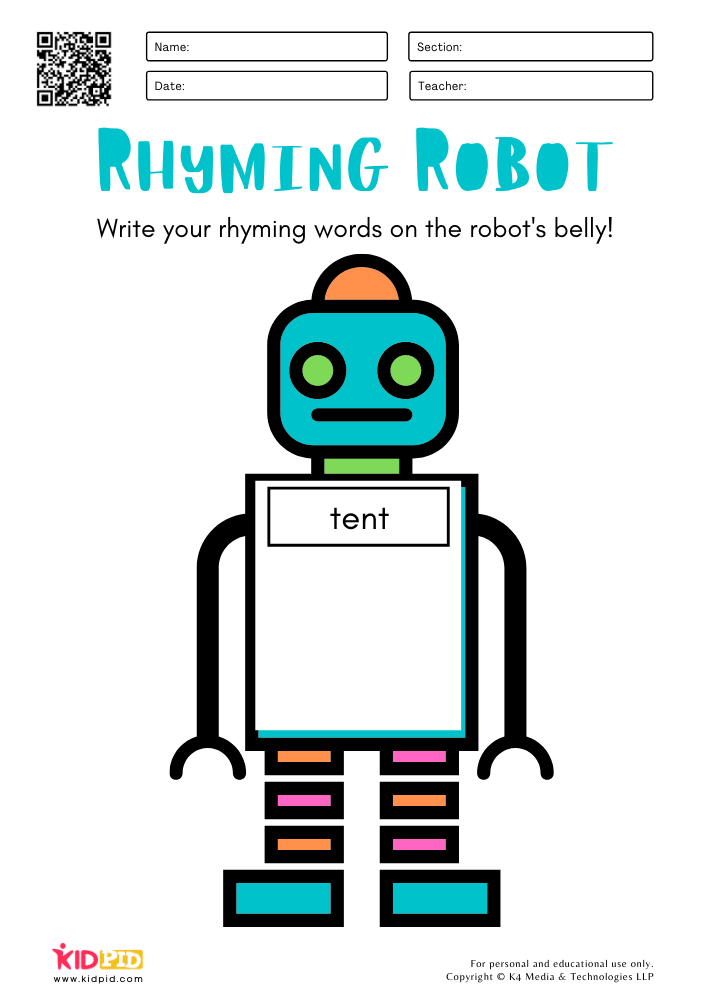
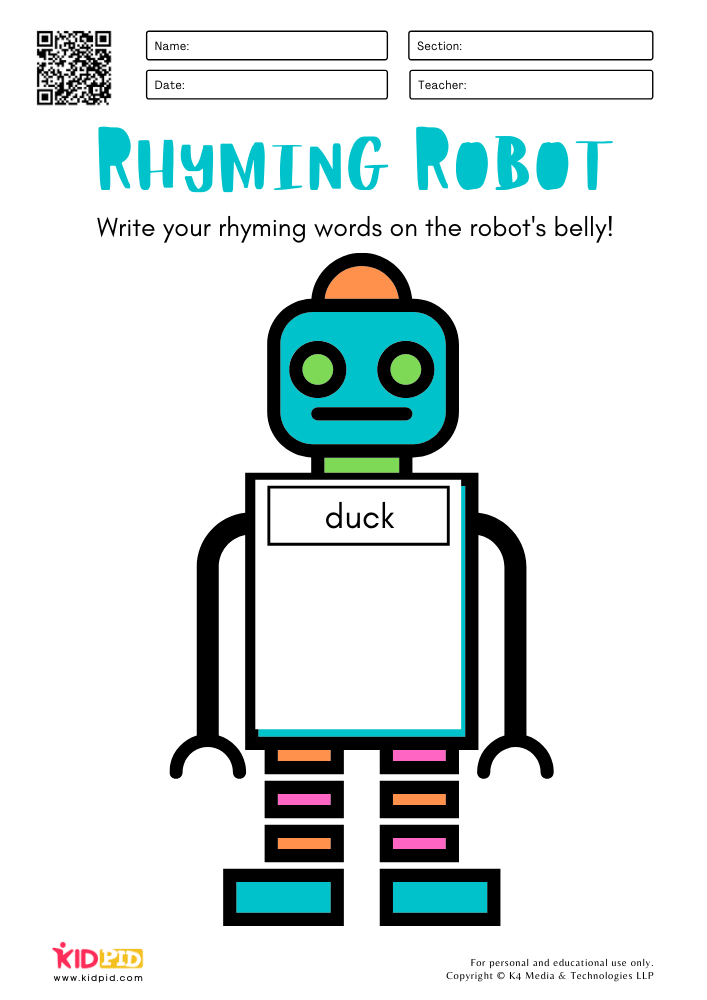
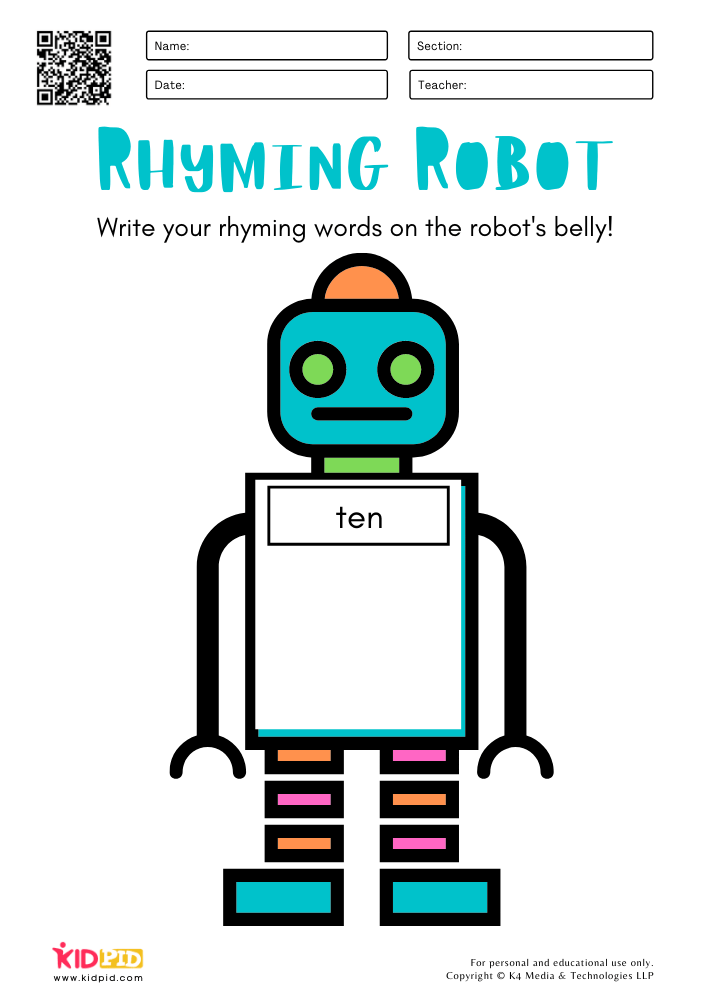
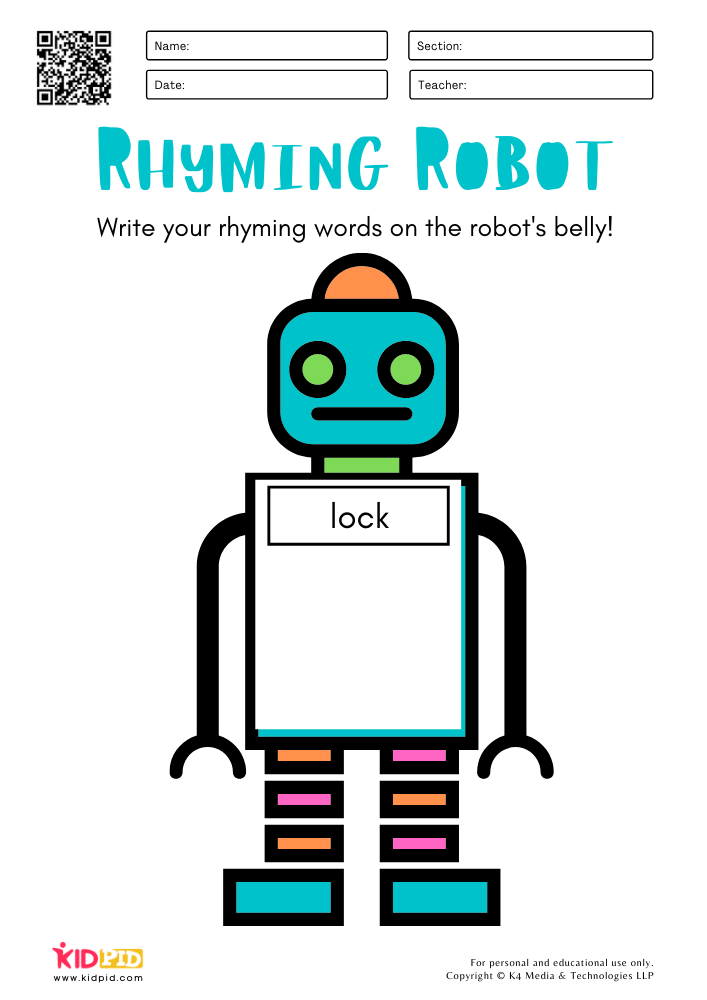
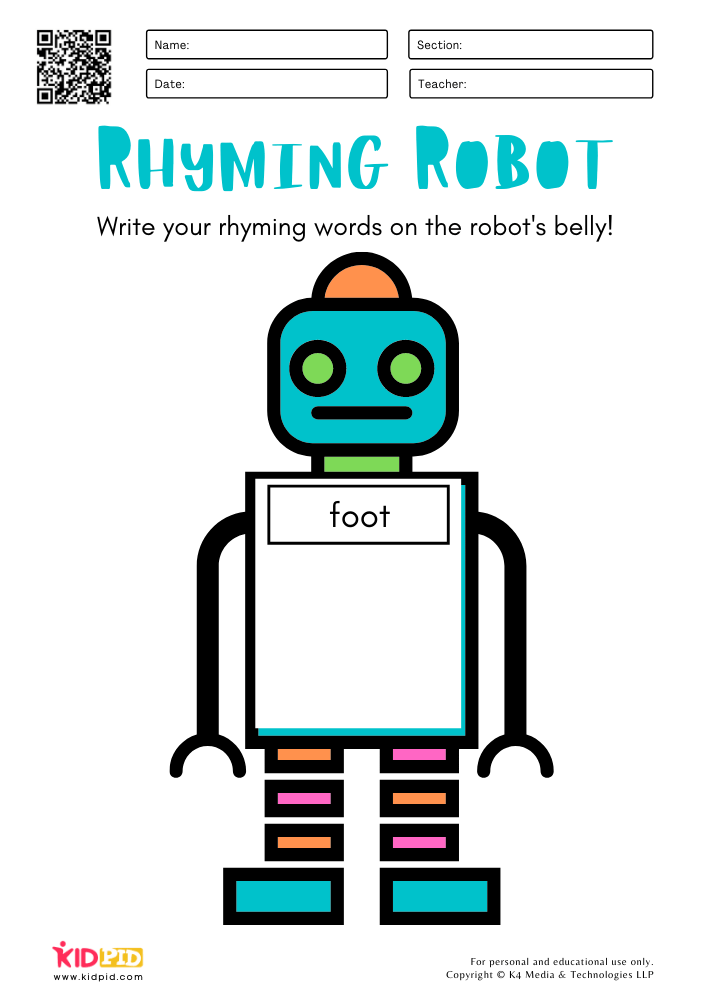
The worksheets are curated especially for young children. To rhyme is a very important step for phonemic awareness. Finding rhyming words makes for a fun educational game that is liked by many young ones. It stresses them to think creatively and sharpens their mind as well as their knowledge of words and sounds. Once your kid is done with this worksheet, don’t let him stop here. Visit our other worksheets for similar exercises!
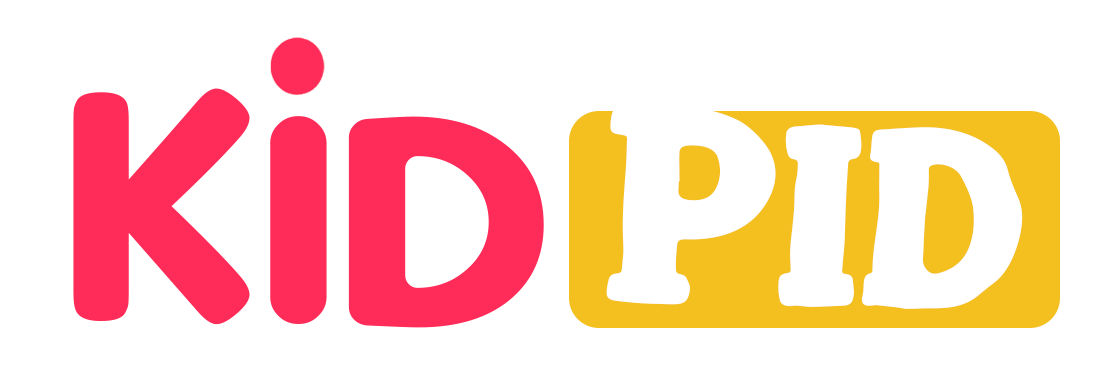

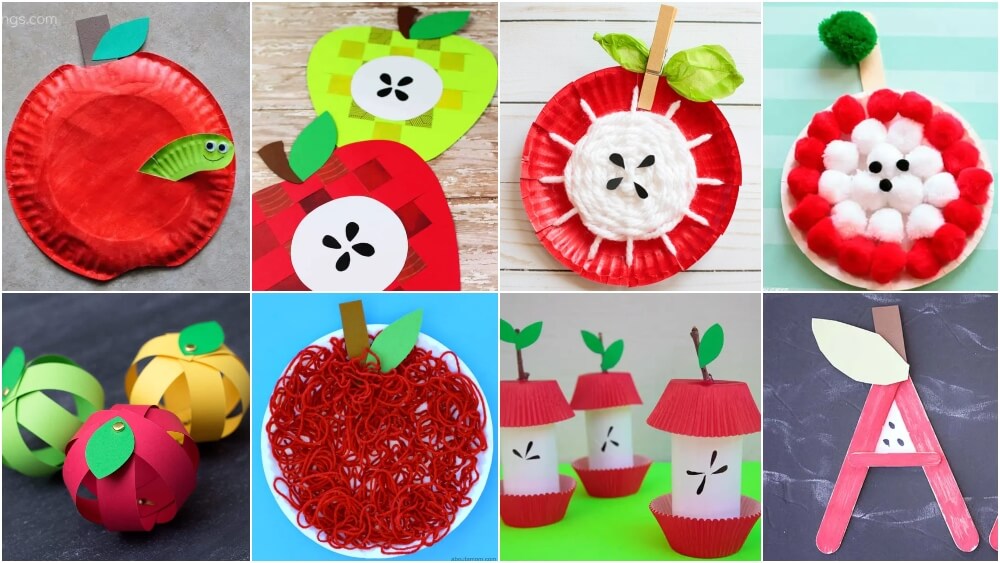
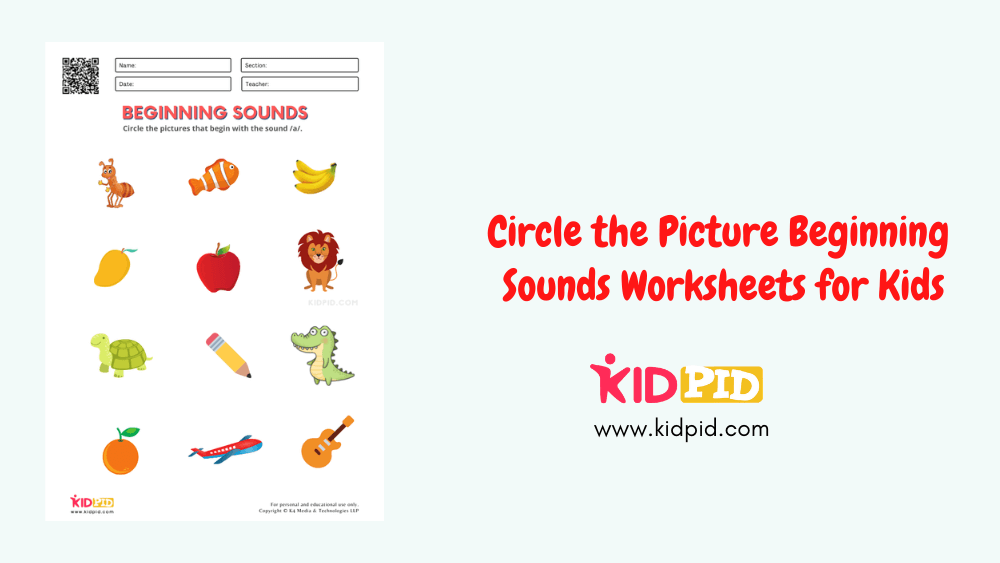
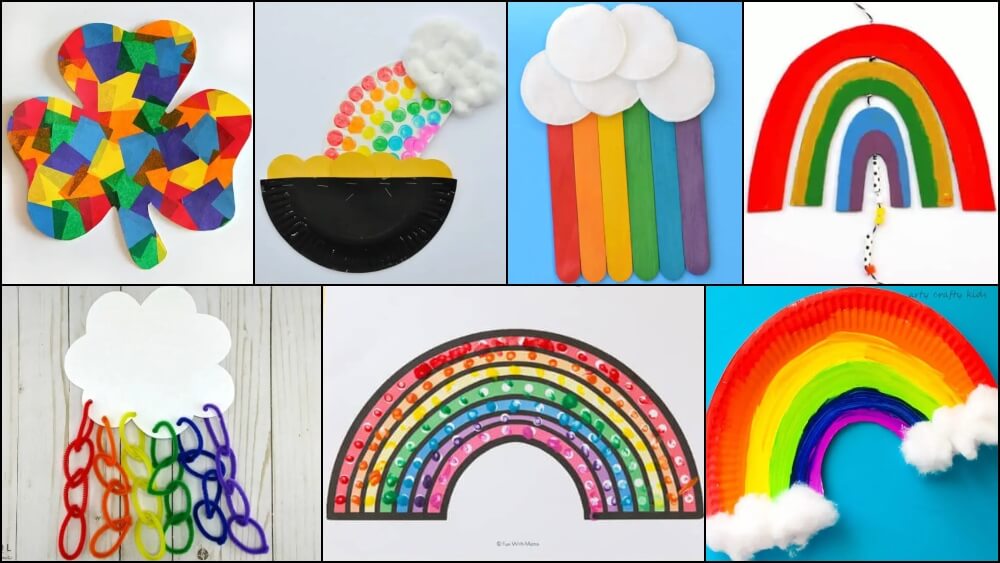
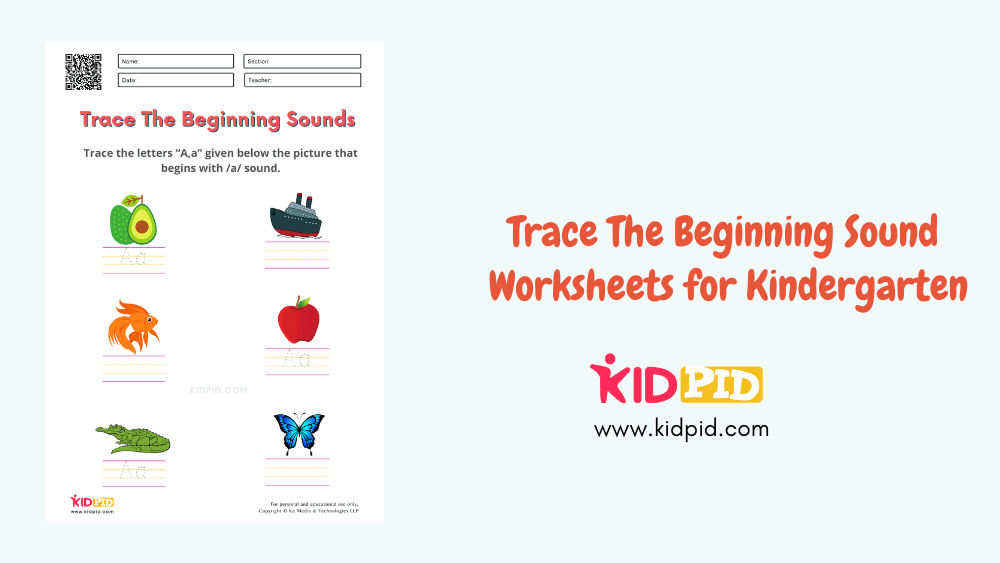
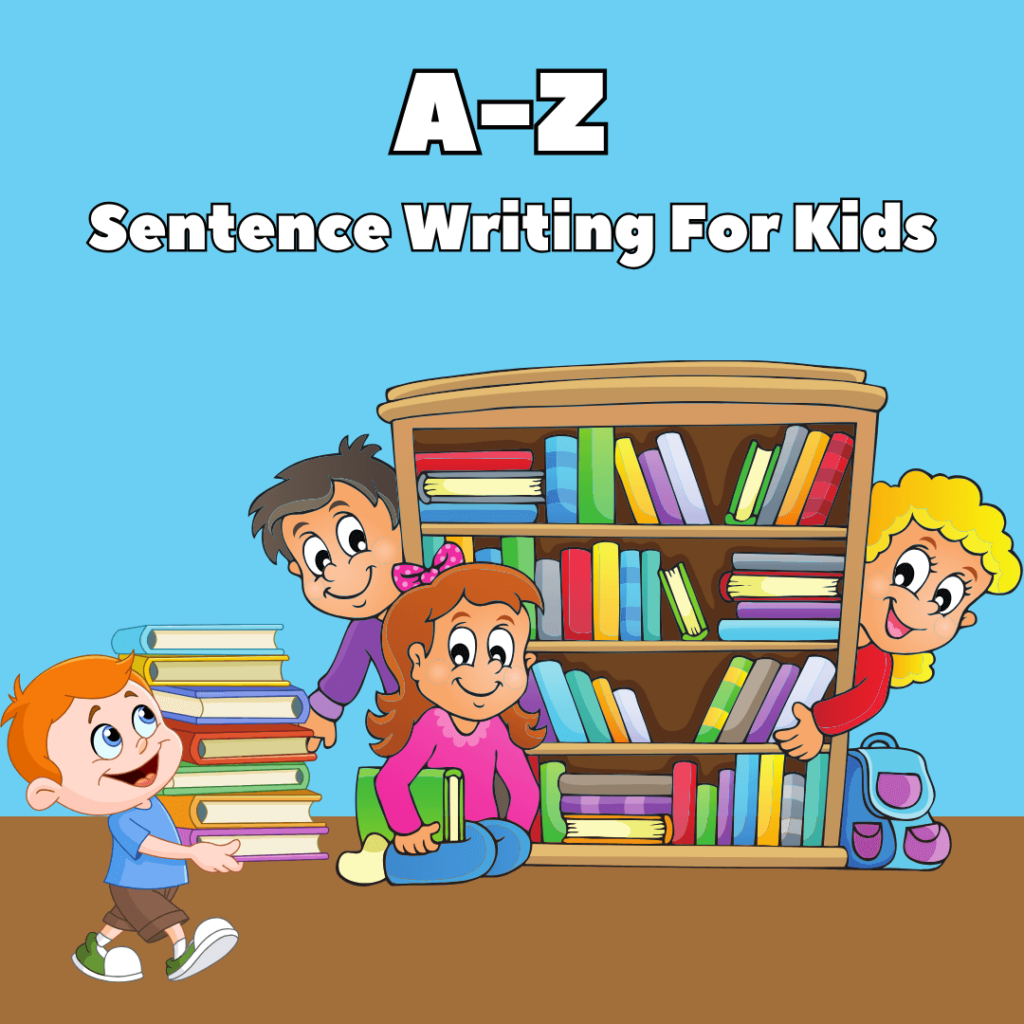
Responses